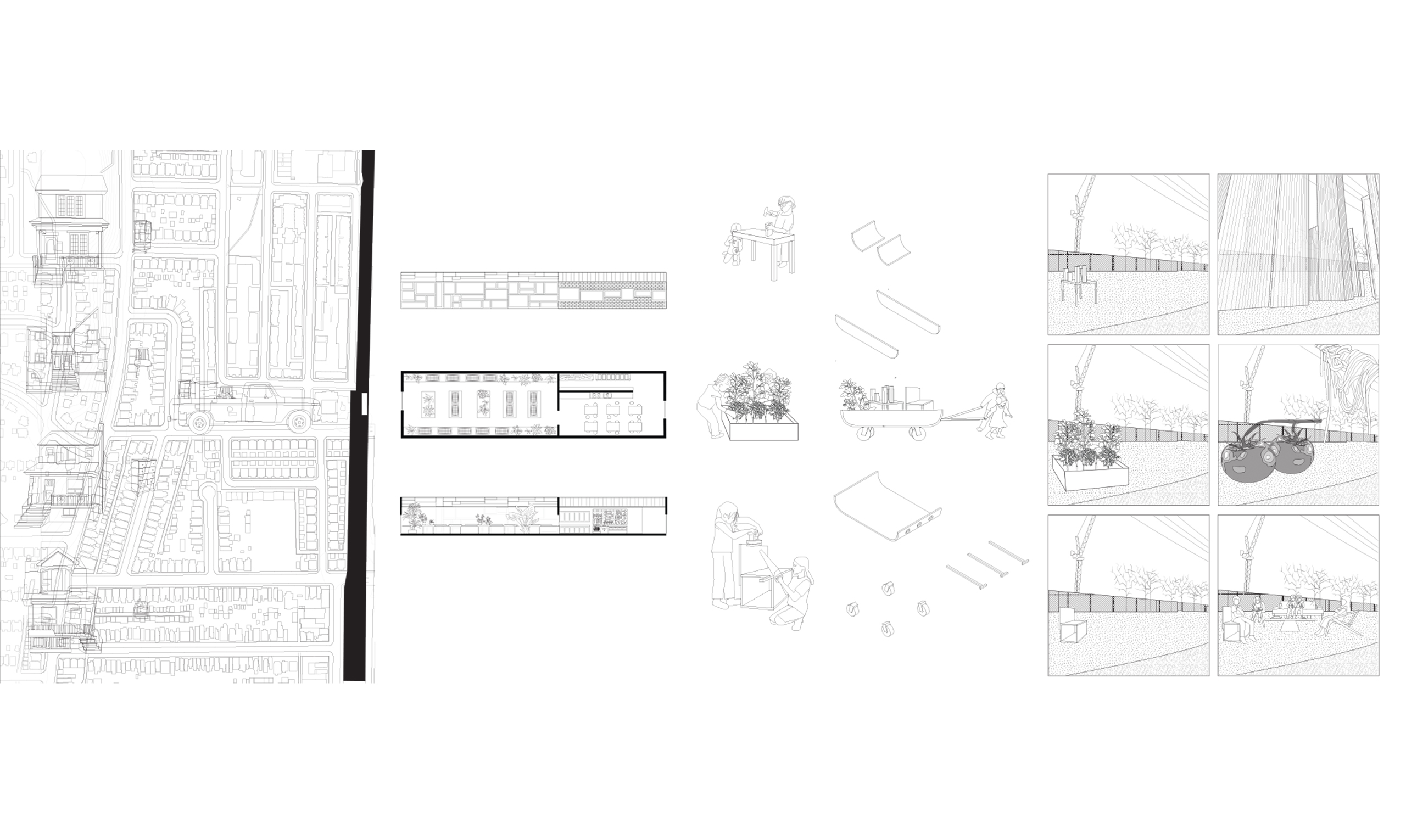Objects in parks that have been left behind by community members are a case study into how tools can be given to children so they can create their own playscapes and manipulate sites to their needs. Through a series of workshops at a local community centre, children were able to design their own public spaces and the objects which occupy them. This 2.5 km park adjacent to the Canadian Pacific Railway allows children to access the city in ways that could otherwise be inaccessible. Through children-led tactical urbanism, they will not only transform the urban environment but build it themselves.
A large part of my design work this semester was based on the workshop that I did with children from a local community centre where my biggest takeaway was not the designs, they came up with but the format of the workshop itself and how it got children to be more engaged with their public spaces. Because of this I decided to let workshops be a central part of my design for the elements within the park letting children design and build playground pieces out of old furniture, toys, and construction materials that would be contributed to the workshop by the community.
I wanted to tie the more permanent elements of the park to what was historically there and to the adjacencies to the park such as retirement homes, and creeks that ran through the park. I had the kids in the workshop help to create designed elements that went along with these. Another way that I wanted to incorporate memory into the park was through the topography being created by burying broken toys and play structures that were built by the kids and having these mounds built up over time as more objects are created. The workshop itself would hold memories of the neighborhood and be built out of recycled construction materials from demolished homes near the park.










